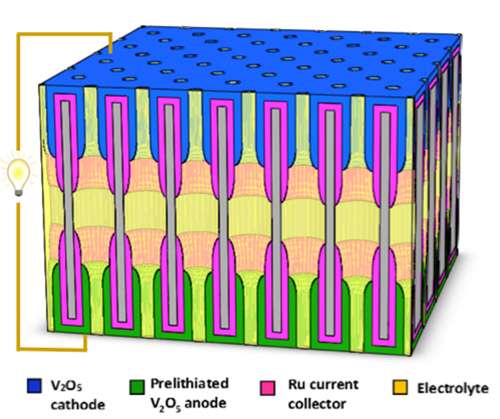Tiny batteries made in nanopores manage ions and electrons for high power and extended life

Tiny batteries formed inside nanopores demonstrate that properly scaled nanostructures can use the full theoretical capacity of the charge storage material. These nanobatteries delivered their stored energy efficiently at high power (fast charge and discharge) and for extended cycling.
Precise structures can be constructed to assess the fundamentals of ion and electron transport in nanostructures for energy storage and to test the limits of three-dimensional nanobattery technologies.
Nanostructured batteries, when properly designed and built, offer promise for delivering their energy at much higher power and longer life than conventional technology. To retain high energy density, nanostructures (such as nanowires) must be arranged as dense "nanostructure forests," producing three-dimensional nanogeometries in which ions and electrons can rapidly move. Researchers have built arrays of nanobatteries inside billions of ordered, identical nanopores in an alumina template to determine how well ions and electrons can do their job in such ultrasmall environments.
The nanobatteries were fabricated by atomic layer deposition to make oxide nanotubes for ion storage inside metal nanotubes for electron transport, all inside each end of the nanopores. The tiny nanobatteries work extremely well: they can transfer half their energy in just a 30 second charge or discharge time, and they lose only a few percent of their energy storage capacity after 1000 cycles. Researchers attribute this performance to rational design and well-controlled fabrication of nanotubular electrodes to accommodate ion motion in and out and close contact between the thin nested tubes to ensure fast transport for both ions and electrons.
More information: "An all-in-one nanopore battery array." Nature Nanotechnology 9, 1031-1039 (2014). DOI: 10.1038/nnano.2014.247
"Batteries: Knowing when small is better." Nature Nanotechnology 9, 962-963, (2014). DOI: 10.1038/nnano.2014.263
Journal information: Nature Nanotechnology
Provided by US Department of Energy





















